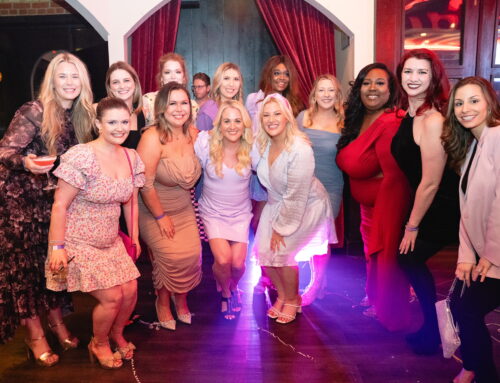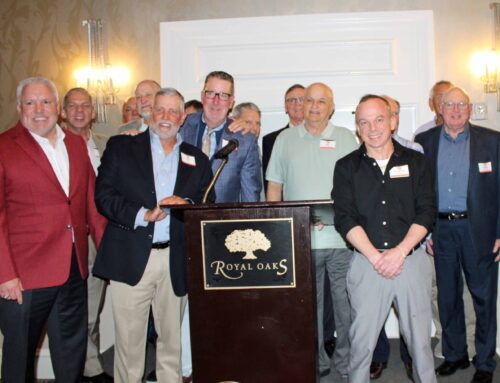From its humble beginning of neighborhood children riding down Woodmen Circle on their trikes, the Lake Highlands’ Fourth of July Parade has slowly become a way to honor many things dear to its participants. Covering more ground and imbued with more meaning with each of its 21 years, the parade honors local and national, past and present, respecting the nation’s origins and offering a hearty dose of fun and thrills.
Sure, almost everyone receives an award for their all-nighter float creations, and parents enjoy sipping cold drinks with rarely seen neighbors, but what makes this neighborhood tradition so special are the people, the parade and the amount or heart, dedication and patriotism they pour into it each year.
Here are some of the trailblazers, participants and dedicated folks who have made sitting outside in the middle of a Texas July day something to plan your summer vacation around.
Pint-Sized Beginnings / What might have happened if the Bakers hadn’t moved here? Just one year after doing so in 1980, Charles Baker’s two daughters, Jennifer and Rachel, then 10 and 7, along with the two neighboring Schmitt girls, Stephanie and Laura, decided to decorate their bikes and little red wagon to celebrate Independence Day.
Two year-old brother Andrew Schmitt was plopped into the wagon, and the Baker’s dog, Sandy,was costumed. The five children and their canine victim set out from where they lived on Woodmen Circle, trouncing down the sidewalk next to Church Road, to what was then Skyline Park (now Lake Highlands North Park).
“I think they probably went swimming in the park pool after their historic activity,” says Charles Baker, father of the two girls and a longtime neighborhood resident.
The following year, 1982, they did the same. But this time, about 15 kids and five dogs set out on the route. For the next few years, the group continued to double and triple in size until finally, adults began to become involved as well.
“From the beginning, they continued to start from the middle of our cul-de-sac (Woodmen Circle),” Baker says, “and they continued to use the sidewalk until the Recreation Center got involved.”
In 1991, the director of the Lake Highlands Recreation Center finally caught on that something was afoot on nearby Church Road on the Fourth of July, and began publicizing it on the marquee in the park. A police escort was arranged, and the location changed to the North Highlands Bible Church parking lot to accommodate more people. After all those years, the walk finally graduated to full-fledged parade status when the Lake Highlands Exchange Club planned a small carnival that began in the park after the parade.
Last year, Baker’s daughter Jennifer flew in from California so she, sister Rachel, and little Andrew Schmitt could ride together on a float commemorating the 20th anniversary of the parade they started.
“It is truly an old-fashioned grassroots neighborhood activity,” Baker says.
Sons of Patriotism / Lake Highlands members of the Dallas chapter of the Sons of the American Revolution (SAR) celebrate their American heritage like few others.
Ralph McDowell, a neighborhood resident and current district vice president for the Texas chapter of SAR, along with Charles Baker and seven others, dress up every Fourth of July in their Revolutionary War-era Minutemen uniforms, in homage to those who served in the Revolutionary War.
For McDowell, the march is in memory of his five-generations-removed family member, James Boyd, who served in the military in Maryland as the colonies fought the British.
“We were chartered to protect our national heritage,” says McDowell of the SAR’s founding in 1889. “Representing at the parade is what our organization does best, and the kids just love it.”
Baker, upon joining SAR in 1999, asked the Lake Highlands Recreation Center director Charlie Bussey if neighborhood SAR members could be involved in the parade. With Bussey’s acceptance, Baker, McDowell and the others were assigned a slot near the front of the parade, a spot they occupy every year.
“This year, 13 Boy Scouts will join the Minutemen by carrying the 13 flags of the 13 original colonies, owned by the Dallas SAR chapter,” Baker says.
The Dallas chapter is the largest in Texas.
“I love what we do, the people we have,” McDowell says. “The fellowship is terrific. We have people from all trades and professions, who are all very interested in promoting good citizenship and patriotism.”
The Past Rides Again / Neighborhood resident Ward Beaudry has a tendency toward nostalgia very much in line with our neighborhood’s Fourth of July Parade. Beaudry’s candy-apple red 1966 Ford Mustang, which he and his wife have owned for nearly 36 years, was retired as his principal car in 1989.
Soon afterward, the classic could be seen rarely, ambling down the streets only on pretty days. Now, the Mustang enjoys its day in the spotlight once again, as the car to be seen in at the parade.
“Having old cars make the parade so it’s not just tricycles,” says Beaudry, who has been escorting the parade’s Grand Marshall in his car for the past 14 years.
“The car adds a little to the parade, and the kids still drool. High school boys love it,” he says. It’s not the only car ogled by adolescents on parade day: There’s a World War II Jeep, a Model A Ford and an old pickup truck with wood paneling – “a really cool looking animal,” Beaudry says – that come out that day as well to grace us with their timelessness.
“The parade is a wonderful community function,” Beaudry says. “Lake Highlands is sort of a unique community. We’re sort of on our own, so we have a real feeling of community that much of the Metroplex lacks in my opinion.”
Any Which Way You Can / Neighborhood resident Jack Pyland knows how to make an entrance. Beginning with a stint for a few years in the mid-’80s, and then starting once again four years ago, Pyland and some of his buddies have been joining the parade crowd the best way they know how – by jumping out of a plane.
Pyland, a local business owner who has been skydiving for 20 years, has to cut through one more roll of red tape than most to participate in the parade: He must file a request with the Federal Aviation Administration asking for clearance, then wait and see what kind of weather the day brings.
“There are certain basic safety regulations we have to follow,” Pyland says. “Because of DFW Airport, we can’t get enough clearance to do formations – we have to jump below 6,000 feet.”
To the gratefully uninitiated, that’s fairly low for a skydive.
But weather permitting, once the parade is seen between the recreation center and the library, Pyland and his friends begin to jump out of the plane one at a time over the soccer fields. This gives them three or four minutes to land.
“The last person – me,” Pyland says, “comes out with a 40-by-60-foot American flag.”
The size of the flag, however, may change depending on the weather. For instance, windy days translate into a smaller flag for safety reasons.
“The kids want to touch the parachutes, and we let them help us pack up and take pictures with them and hand out candy. Grinning, greeting and shaking,” he says.
“It’s a cohesive neighborhood, and we like to promote support of the kids, and honor the flag.”





